Looking for paella tips? If you already had a look at my site, you might know that traditional paella is a whole world. I just gathered here some paella-making tips and advises you may want to know in order to make a proper paella, the way we traditionally make it in Spain.
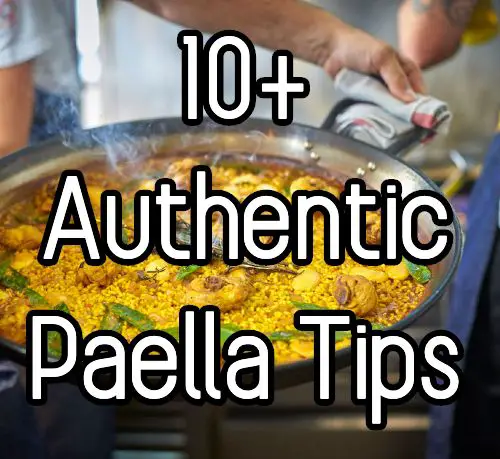
1. Paella rice type
- Paella rice is very important in order to succeed. The rice for paella is short and round. Long grain rice doesn’t get easily over-cooked, however, it doesn’t absorb the taste of the rest of the ingredients either. It’s not worth being stingy with the main ingredient! What about other varieties?

2. Cooking paella rice
- Be careful with the times: they vary depending on the size of the paella, the thickness of the rice layer, the hardness of the water…
- There are many rules on timings, but the easiest one I’ve found is: let the stock disappear (usually 15 min max heating), turn min heating for 15min, then heating off and wait for 5 min to let it rest.
- You should turn off the fire when the rice has lost its central hardness but is still a little whole.
Learn more about how to make paella rice
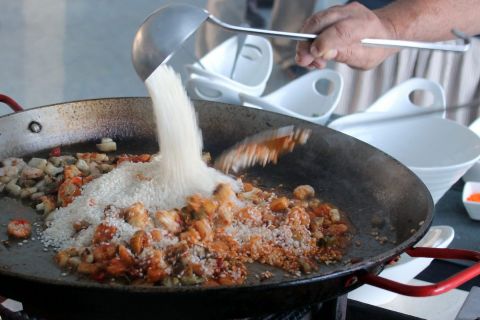
3. Paella Pan
- Use a large skillet pan or better a proper paella pan. Rice in paella is cooked in extension, not in height. The thinner the layer of rice, the better the result. Otherwise, the rice on the bottom can be overcooked and make an unpleasant dough, while the rice on the top not cooked enough.
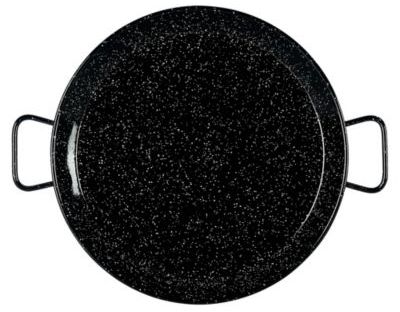
4. Paella Burner
- It is very important that the fire reaches equally to all the bottom of the paella. If your fire is not big enough, use a paella diffuser.
- Gas is the most comfortable option among what you can find in modern kitchens, but there is nothing like firewood. However, you can cook paella in a vitro-ceramic or induction cooker too.
Pro tip – You can use 2 or more gas burners at the same time to spread the heat evenly. Set the same heating power (as possible) on all of them and rotate the pan gradually to asure all the paella get the same heat. This way, you can use a big paella pan at home.
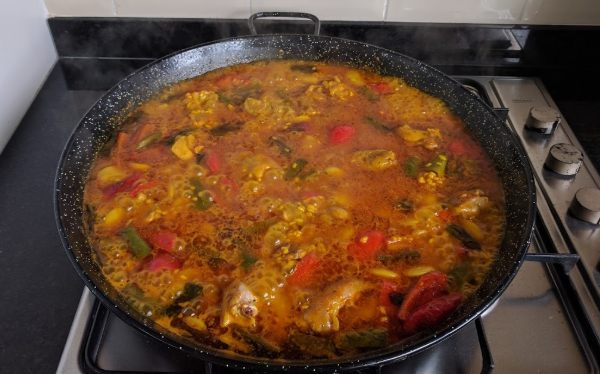
5. Paella broth
- The proportion of paella stock: Usually, 1Kg of rice needs 2Kg of stock when using paella rice. When the recipe is not “dried rice” or when using bomba rice, we need a little more liquid.
- When you make seafood rice, use the shells of the shellfish, fishbones, heads… to make the seafood stock.
- If you are going to use mussels, strain them in advance, leave them in their shell (remove the shell that covers) to fatten, and then strain their liquid and add it to the rice stock.
- Chicken stock for paella is easier to make and I recommend using a chicken carcass.

6. Paella oil
- It is necessary to be generous with the oil but not exceeding the limit, of course, because it can be too heavy. The approximate measure is 0.3l. of oil for each liter of rice. And minimum, Virgin Olive Oil.
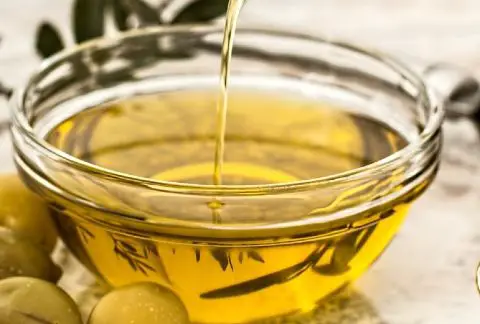
7. Paella mates
- Fresh salad
- Gazpacho
- Tapas such as padron peppers, serrano ham…
- Desserts such as flan or crema catalana
- Wine
- …
Learn more about what to serve with paella
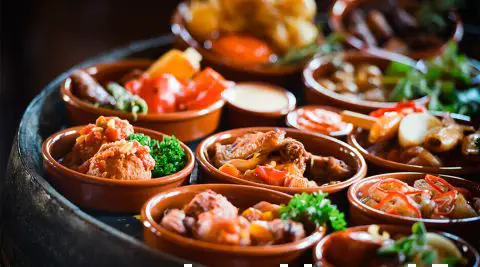
8. The magic touch
- A little rosemary or thyme is not a must at all. However, add it before covering the pan to get a spectacular result. Another trick is to add a head of unpeeled garlic, simply cutting the base or just saute it. It gives a delicious taste.
- Another way to enhance the flavor is with fresh crushed garlic and parsley, or a chopped dry red pepper. Just add it before the tomato. Yummy
- Use real saffron. It really makes a difference. And if you’re one of those who like yellow rice, use just a little coloring (but without abusing, and always after having used good saffron), or better yet a little paprika. Enjoy the natural colors of your paella.
In order for the saffron strands to transmit all their flavour, we must toast them inside an aluminium foil, before adding them in pieces to the broth.
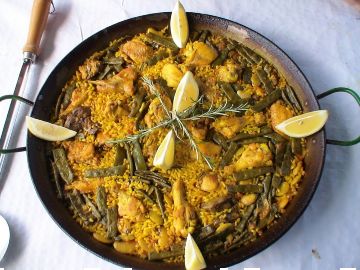
9. The crust
In order to get the famous “socarrat” (rust in Valencian) there are two techniques:
- When the rice has absorbed the broth, it is time to provoke the socarrat, for which you pour a thread of extra virgin olive oil that penetrates between the grains reaching the bottom of the paella and caramelice.
- Spread the grains of rice evenly in a paella pan or frying pan as if it were a thin layer, so that at the end of cooking the strength of the fire is increased and they are toasted underneath.
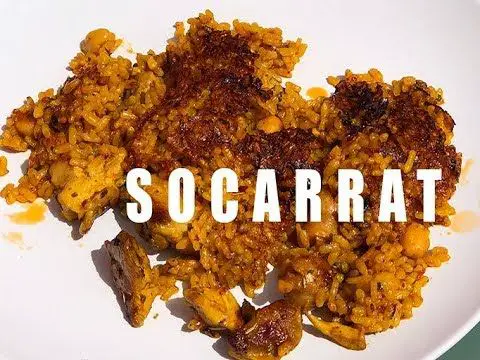
10. Authentic paella sins
- Lemon. Lemon juice helps mask rice flavors and fragrances of a paella recipe. As a cook, I understand someone doesn’t like my rice when they squeeze lemon on it. I like it for decoration on seafood rice, though.
- Never stir the rice after the moment the stock starts boiling. Paella is not risotto.
- Don’t add cold stock if the water has evaporated too quickly, just try it as much as it makes you confident.
- The rice is the main character, don’t saturate the paella with more pieces of meat, fish or vegetables than rice. I’ve seen lots of paella pictures where you can barely see the rice, that’s unacceptable.
- Be careful with the tomato amount, you can easily ruin a paella by adding too much tomato.
- Rice cooked in a saucepan will never be a paella but a rice dough unless the rice depth is no larger than 4 cm.
- We love wine in Spain, but we never pour wine to a paella, not even white whine.
- Egg??!! 🙁
- Spanish chorizo: no, traditional paella don’t have chorizo
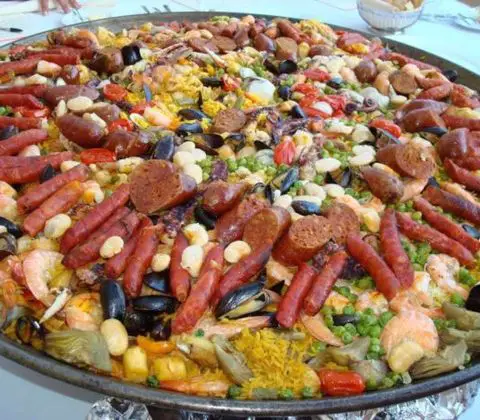
I hope this 10+ tips are interesting for you. I know, I said 10+ and I just gave 10. However, they come form the core of paella land. They totally worth a + 😉

